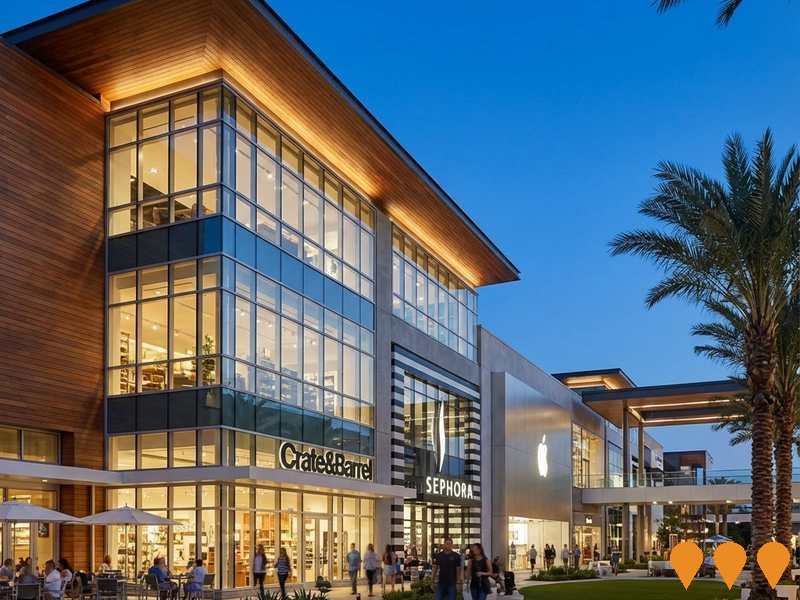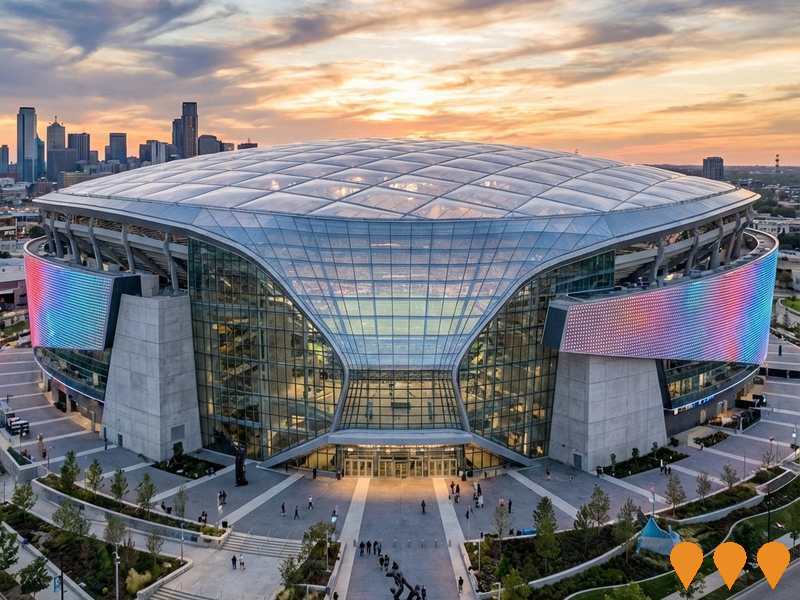Chart Color Schemes
est. as @ -- *
ABS ERP | -- people | --
2021 Census | -- people
Sales Activity
Curious about local property values? Filter the chart to assess the volume and appreciation (including resales) trends and regional comparisons, or scroll to the map below view this information at an individual property level.
Find a Recent Sale
Sales Detail
Population
Population growth drivers in Stanhope Gardens - Parklea are strong compared to national averages based on AreaSearch's ranking of recent, and medium to long-term trends
Stanhope Gardens - Parklea's population is 13,188 as of August 2025. This figure shows an increase of 154 people since the 2021 Census, which reported a population of 13,034. The change is inferred from ABS estimates of 13,185 in June 2024 and seven additional validated addresses since the Census date. This results in a density ratio of 3,381 persons per square kilometer, placing it in the upper quartile nationally according to AreaSearch's assessments. Overseas migration contributed approximately 66.3% of overall population gains recently.
AreaSearch uses ABS/Geoscience Australia projections for each SA2 area released in 2024 with a base year of 2022, and NSW State Government's SA2 level projections for areas not covered by this data, released in 2022 with a base year of 2021. Growth rates by age group from these aggregations are applied to all areas for years 2032 to 2041. Future population dynamics anticipate an increase just below the median of Australian statistical areas, with an expected growth of 1,667 persons to 2041 based on latest numbers, representing a 12.6% total increase over 17 years.
Frequently Asked Questions - Population
Development
The level of residential development activity in Stanhope Gardens - Parklea is very low in comparison to the average area assessed nationally by AreaSearch
Stanhope Gardens - Parklea has approximately five residential properties granted approval annually. Over the past five financial years, from FY21 to FY25, 26 homes were approved, with one more approved in FY26 so far.
The population has been declining recently, but development activity has been adequate relative to this decline, benefiting buyers as new homes are built at an average expected construction cost of $817,000, indicating a focus on the premium segment. Compared to Greater Sydney and nationally, Stanhope Gardens - Parklea has significantly less development activity, which generally supports stronger demand and values for established homes due to limited new supply. Recent development has been entirely detached houses, maintaining the area's traditional suburban character with a focus on family homes appealing to those seeking space, reflecting a highly mature market with around 4606 people per dwelling approval. By 2041, Stanhope Gardens - Parklea is expected to grow by 1,664 residents. If current construction levels persist, housing supply may lag population growth, potentially intensifying buyer competition and underpinning price growth.
Looking ahead, Stanhope Gardens - Parklea is expected to grow by 1,664 residents through to 2041. Should current construction levels persist, housing supply could lag population growth, likely intensifying buyer competition and underpinning price growth.
Frequently Asked Questions - Development
Infrastructure
Stanhope Gardens - Parklea has very high levels of nearby infrastructure activity, ranking in the top 20% nationally
Changes to local infrastructure significantly impact an area's performance. AreaSearch has identified ten projects likely to influence the area. Notable ones include Essentia Smart Townhomes by Mulpha Norwest, Bella Vista and Kellyville TOD Accelerated Precincts, Stanhope Gardens Village Centre, and 40 Memorial Avenue, Bella Vista. The following list details those most relevant.
Professional plan users can use the search below to filter and access additional projects.
INFRASTRUCTURE SEARCH
 Denotes AI-based impression for illustrative purposes only, not to be taken as definitive under any circumstances. Please follow links and conduct other investigations from the project's source for actual imagery. Developers and project owners wishing us to use original imagery please Contact Us and we will do so.
Denotes AI-based impression for illustrative purposes only, not to be taken as definitive under any circumstances. Please follow links and conduct other investigations from the project's source for actual imagery. Developers and project owners wishing us to use original imagery please Contact Us and we will do so.
Frequently Asked Questions - Infrastructure
Norwest City
Mulpha's $3+ billion masterplanned transformation of the 377-hectare Norwest Business Park into Norwest City - Australia's flagship smart city and innovation hub. Multi-decade staged redevelopment delivering commercial precincts, residential communities (including Norwest Quarter zero-carbon neighbourhood and The Greens), expanded Norwest Marketown town centre, hotel, public parks, precinct-wide LoRaWAN smart infrastructure, sustainability programs and integrated transport. Current employment 30,000+ workers across 800+ businesses, targeting 60,000+ workers and significant residential population by 2040s.
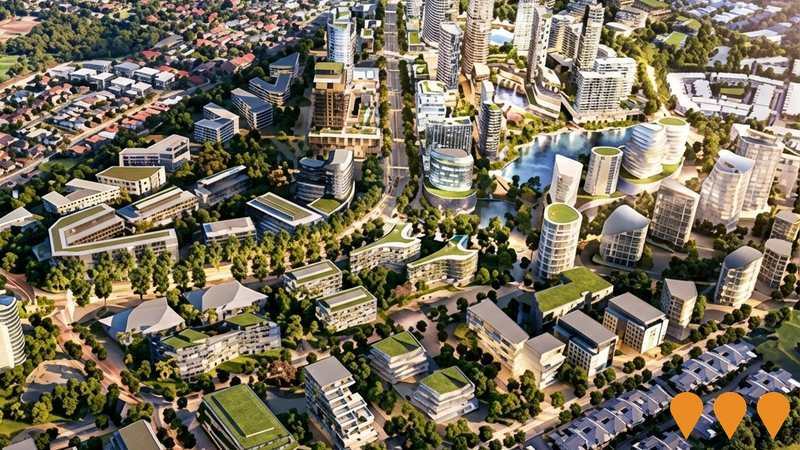
Bella Vista and Kellyville TOD Accelerated Precincts
State-led Transport Oriented Development (TOD) Accelerated Precinct enabling capacity for 4,600 new homes and 3,800 jobs around Bella Vista and Kellyville Metro stations. Rezoning effective 27 November 2024 includes mandatory affordable housing contributions of 3-10%, new public open spaces, active transport links, community infrastructure, a flagship business hub at Bella Vista, and a local neighbourhood centre at Kellyville.
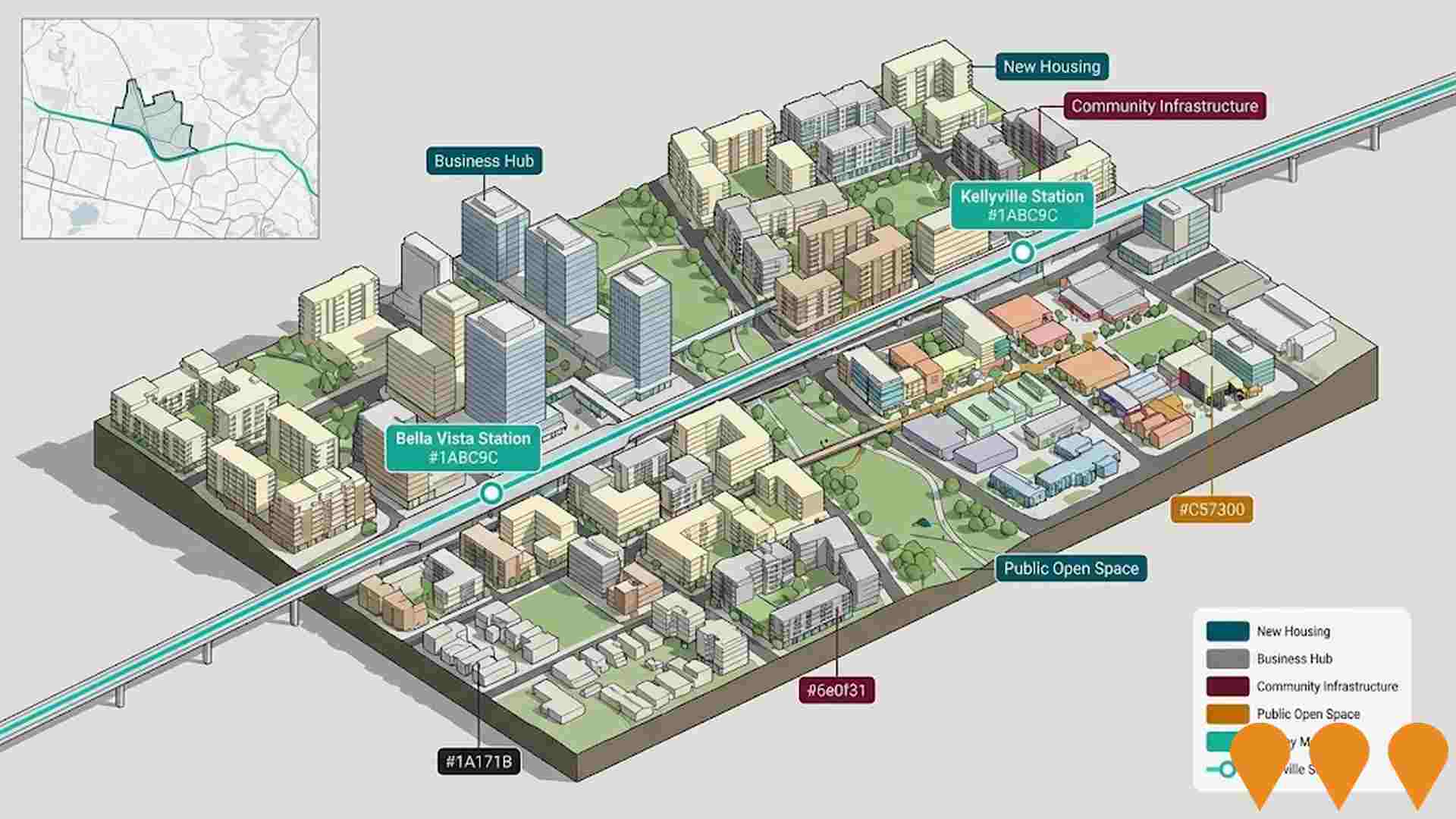
Rouse Hill Town Centre Expansion
A $300 million expansion of Rouse Hill Town Centre by The GPT Group, adding 15,000sqm of new retail and entertainment floor space, 60+ new specialty stores, two full-line mini-majors (including a new-format David Jones), an expanded fresh food marketplace, a revitalised Town Square with enhanced play and dining precinct, and approximately 450 additional car spaces. Works commenced May 2025 with ADCO Constructions. The project will bring the centre to over 85,000sqm GLA upon completion in late 2026, creating 350 construction jobs and 550 ongoing retail and hospitality roles.
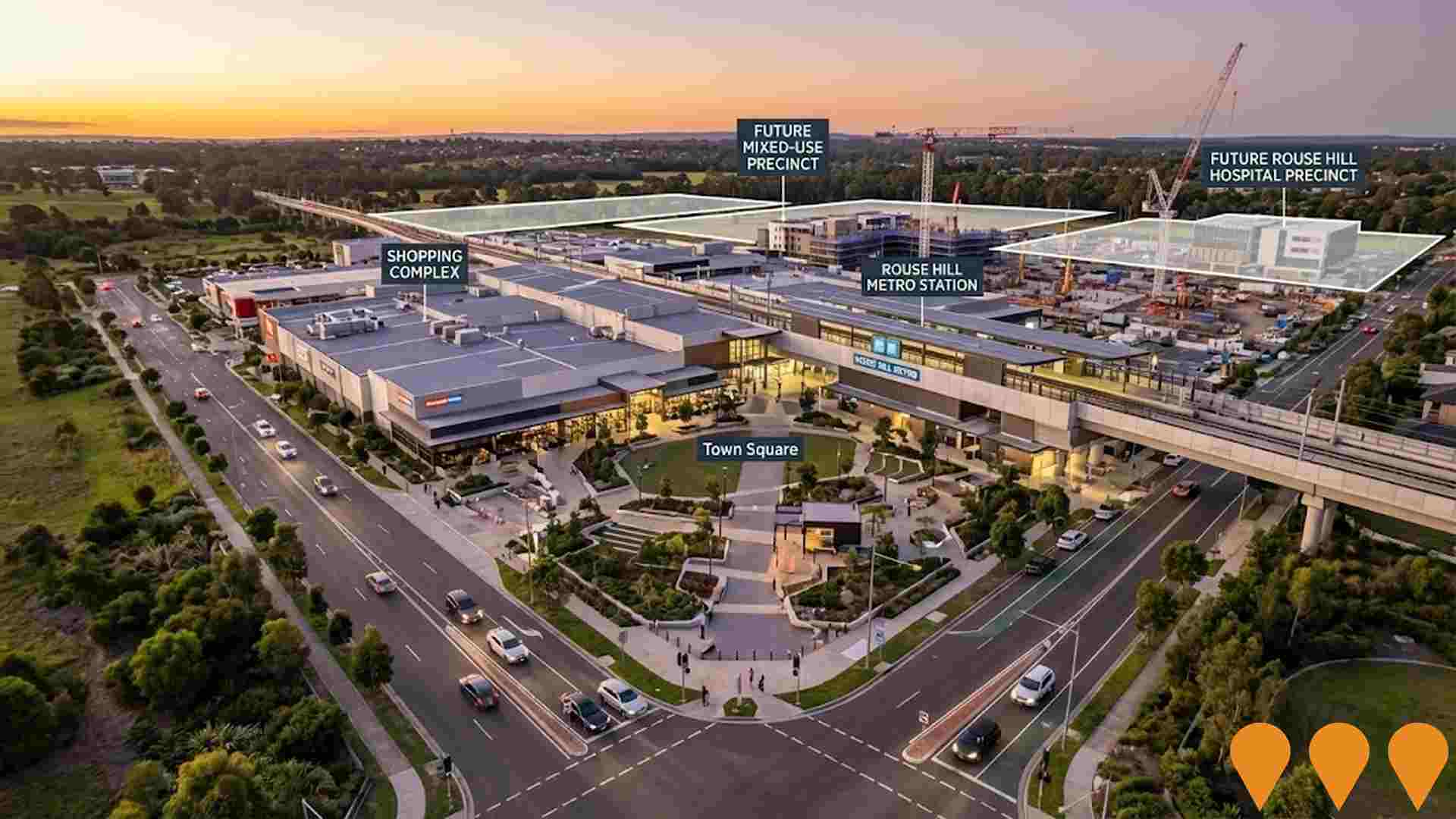
The Ponds Shopping Centre
Australias first and only 6 Star Green Star rated shopping centre, developed by Frasers Property Australia and owned by ISPT. The $40 million centre opened in May 2015, featuring Woolworths as anchor tenant plus 25 specialty stores, medical centre, and 349 parking spaces. The 6300 sqm GLA centre showcases world leadership in sustainable design with rooftop solar photovoltaic system, high-efficiency LED lighting, rainwater collection and reuse, sustainable materials, and natural ventilation. Winner of multiple awards including PCA Innovation & Excellence Award for Best Shopping Centre Development.
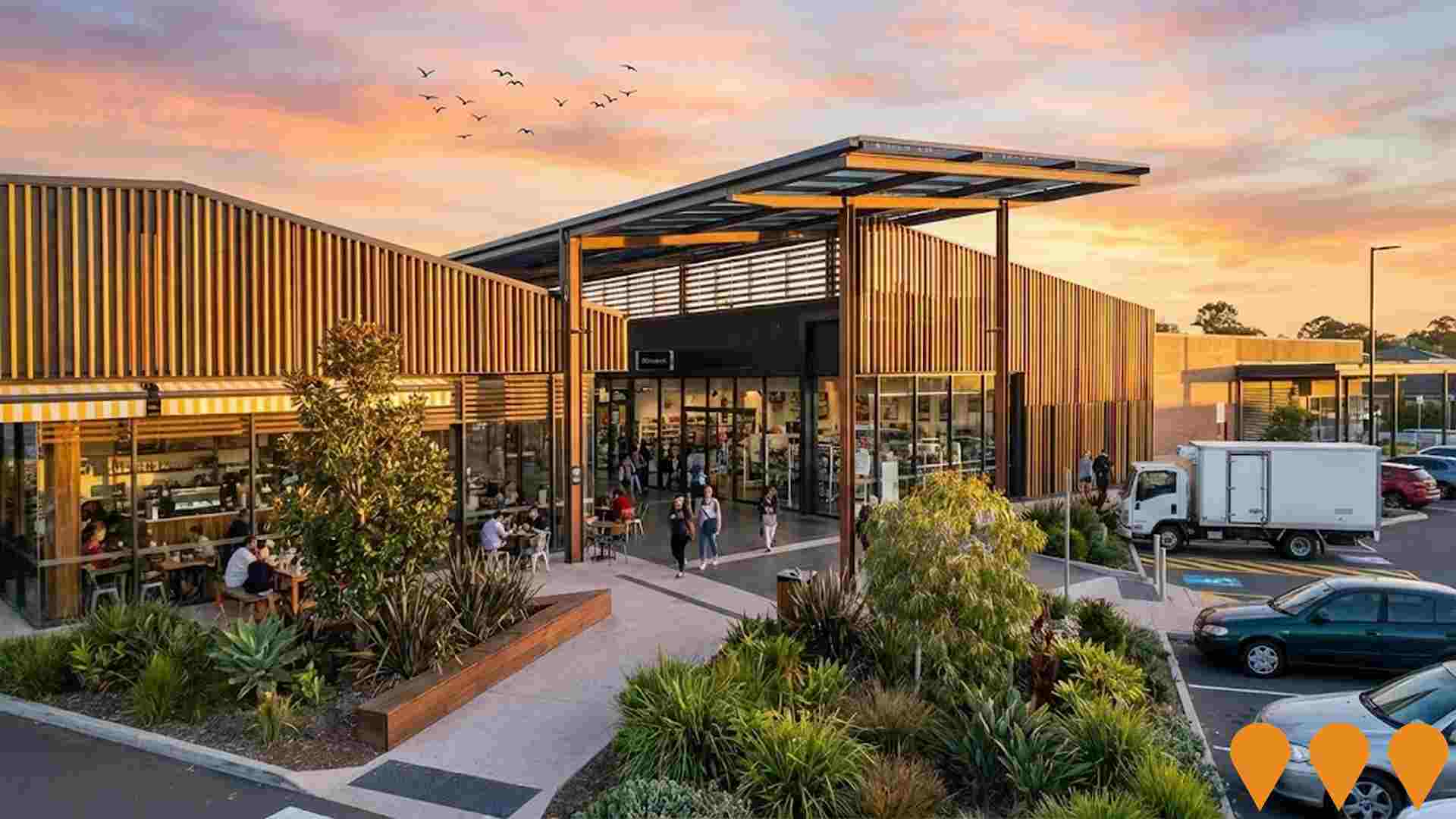
Essentia Smart Townhomes by Mulpha Norwest
Premium development of 74 four-bedroom smart townhomes and 33 large land homesites on 6.96 hectares. Features smart home technology, contemporary design, landscaped parks, and proximity to Norwest Metro Station. Includes community facilities, resident-only Wellness Centre with heated pool, spa, gym, and communal dining. Fully integrated solar systems with embedded network forecast to cut energy bills by over 65%.
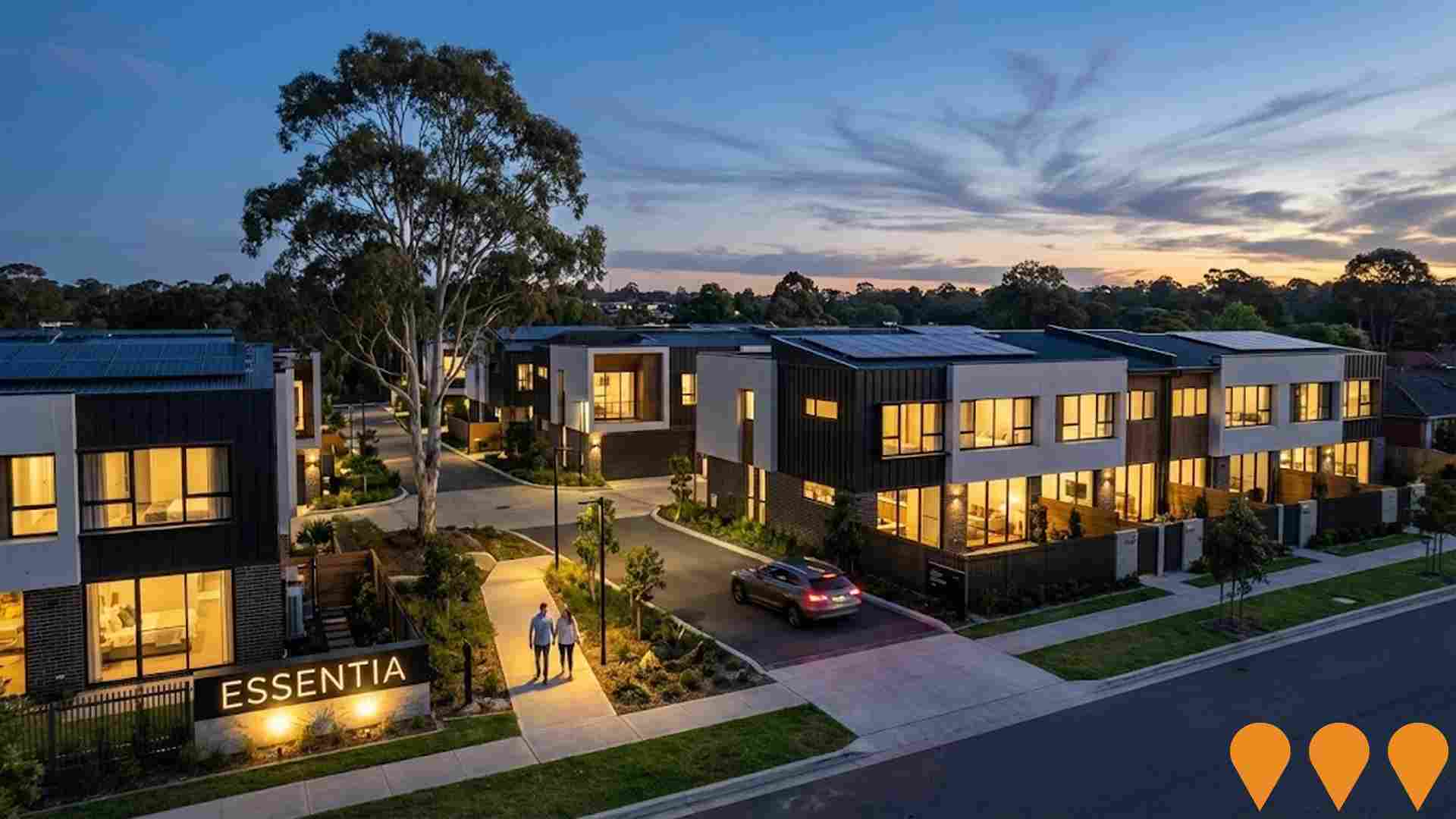
Norwest Quarter
World-leading $1 billion zero-carbon sustainable mixed-use precinct by Mulpha featuring approximately 935 apartments across nine towers with 70% landscaping, open-air plaza, retail, dining, and resort-style amenities. Stage 1 includes Banksia and Lacebark buildings with 196 apartments, NatHERS 8.1+ rating, 100% renewable energy, and zero waste targets. Located 9 minutes walk from Norwest Metro Station.
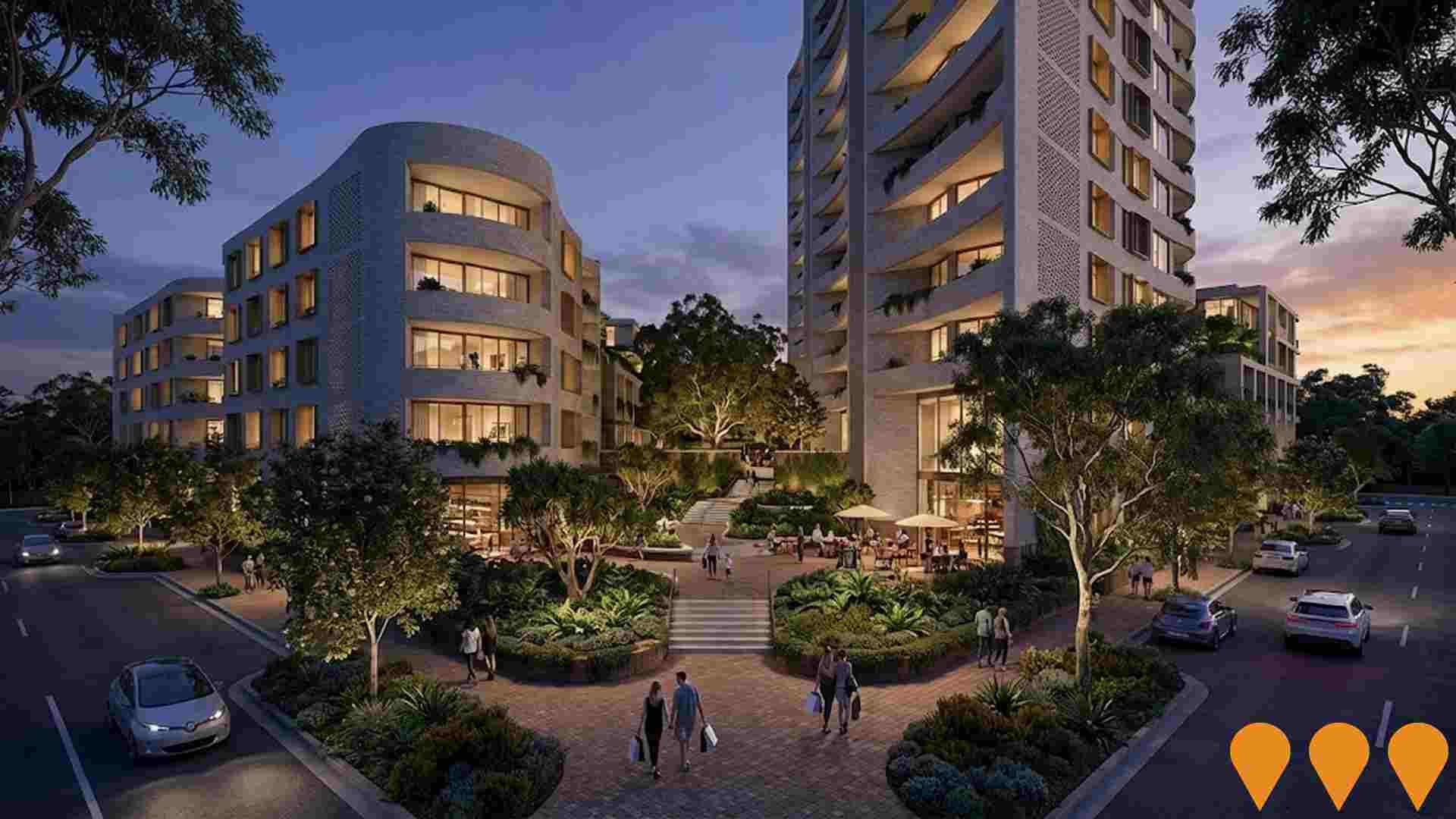
Matthew Pearce Public School Upgrade
$42 million upgrade removing 22 demountables and replacing with permanent teaching facilities. Part of broader infrastructure program addressing student capacity issues in Hills District. Features new classrooms, library and modern educational amenities.
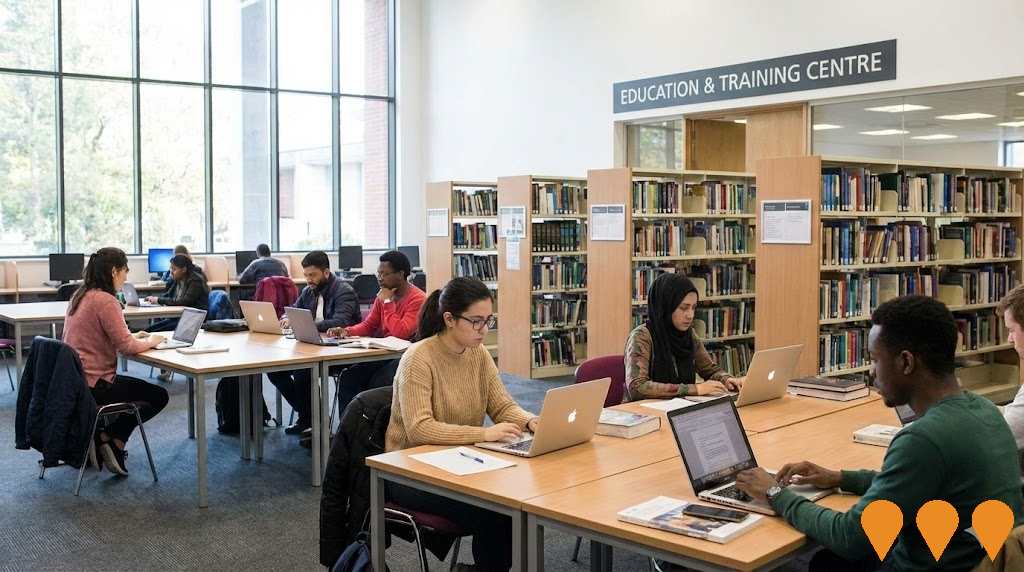
The Ponds High School Upgrade
Upgrade to The Ponds High School to deliver 49 new modern classrooms, new cricket nets, landscaping, removal of existing demountables, car park extensions and upgrades providing over 50 additional spaces, sports field upgrade, electricity substation upgrade, and a recreation area. The project aims to replace temporary facilities with permanent ones and improve overall school infrastructure.

Employment
AreaSearch analysis of employment trends sees Stanhope Gardens - Parklea performing better than 90% of local markets assessed across Australia
Stanhope Gardens - Parklea has an educated workforce with professional services well represented. The unemployment rate was 1.9% in June 2025, below Greater Sydney's 4.2%.
Employment growth over the past year was estimated at 6.3%. As of June 2025, 7,648 residents were employed, with an unemployment rate of 2.3%, matching Greater Sydney's workforce participation rate of 60.0%. Dominant employment sectors include health care & social assistance, professional & technical services, and finance & insurance. Finance & insurance employs 1.3 times the regional average, while construction employs only 6.7% of local workers compared to Greater Sydney's 8.6%.
Over the year to June 2025, employment increased by 6.3%, labour force by 6.5%, leading to a slight unemployment rise of 0.2 percentage points. In comparison, Greater Sydney saw employment growth of 2.6% and unemployment rose by 0.3 percentage points. National employment forecasts from Jobs and Skills Australia (May 2025) project national growth of 6.6% over five years and 13.7% over ten years. Applying these projections to Stanhope Gardens - Parklea's employment mix suggests local growth could be approximately 6.9% over five years and 14.1% over ten years, though this is a simple extrapolation for illustrative purposes only.
Frequently Asked Questions - Employment
Income
The economic profile demonstrates exceptional strength, placing the area among the top 10% nationally based on comprehensive AreaSearch income analysis
Stanhope Gardens-Parklea had an extremely high national income level according to AreaSearch's aggregation of latest ATO data for financial year 2022. The median income among taxpayers was $67,029 and the average income stood at $81,038, compared to Greater Sydney's figures of $56,994 and $80,856 respectively. Based on Wage Price Index growth of 12.61% since financial year 2022, current estimates would be approximately $75,481 (median) and $91,257 (average) as of September 2025. Census data reveals household, family and personal incomes all rank highly in Stanhope Gardens-Parklea, between the 82nd and 96th percentiles nationally. Income brackets indicate that 29.3% of locals (3,864 people) fall into the $1,500-$2,999 category, aligning with the metropolitan region where this cohort likewise represents 30.9%. Higher earners make up a substantial presence, with 47.5% exceeding $3,000 weekly. High housing costs consume 16.4% of income, but strong earnings still place disposable income at the 95th percentile and the area's SEIFA income ranking places it in the 8th decile.
Frequently Asked Questions - Income
Housing
Stanhope Gardens - Parklea is characterized by a predominantly suburban housing profile, with above-average rates of outright home ownership
Dwelling structure in Stanhope Gardens-Parklea, as per the latest Census, consisted of 85.0% houses and 15.0% other dwellings (semi-detached, apartments, 'other' dwellings), compared to Sydney metro's 84.9% houses and 15.1% other dwellings. Home ownership in Stanhope Gardens-Parklea was at 23.0%, with the remaining dwellings either mortgaged (55.9%) or rented (21.1%). The median monthly mortgage repayment in the area was $2,691, below Sydney metro's average of $2,700. Median weekly rent was recorded at $580, compared to Sydney metro's $540. Nationally, Stanhope Gardens-Parklea's mortgage repayments were higher than the Australian average of $1,863, while rents were substantially above the national figure of $375.
Frequently Asked Questions - Housing
Household Composition
Stanhope Gardens - Parklea features high concentrations of family households, with a lower-than-average median household size
Family households constitute 85.7% of all households, including 57.3% couples with children, 18.2% couples without children, and 9.5% single parent families. Non-family households comprise the remaining 14.3%, with lone person households at 12.9% and group households at 1.4%. The median household size is 3.2 people, which is smaller than the Greater Sydney average of 3.3.
Frequently Asked Questions - Households
Local Schools & Education
Stanhope Gardens - Parklea demonstrates exceptional educational outcomes, ranking among the top 5% of areas nationally based on AreaSearch's comprehensive analysis of qualification and performance metrics
Educational attainment in Stanhope Gardens - Parklea is notably higher than national and state averages. As of the latest data, 47.6% of residents aged 15 years and over hold university qualifications, compared to 30.4% nationally and 32.2% in NSW. Bachelor degrees are most common at 30.4%, followed by postgraduate qualifications (14.4%) and graduate diplomas (2.8%). Vocational credentials are also prevalent, with 25.2% of residents aged 15 years and over holding such qualifications - advanced diplomas (10.8%) and certificates (14.4%).
Educational participation is high, with 40.2% of residents currently enrolled in formal education. This includes 14.0% in primary education, 11.8% in secondary education, and 7.3% pursuing tertiary education. The area's educational provision includes St John XXIII Catholic College (Secondary), serving students from Year 7 to Year 12, and St John XXIII Catholic College (Primary), catering to students from Kindergarten to Year 6. Together, these institutions serve a total of 1,969 students. As of the latest ICSEA score, the area demonstrates significant socio-educational advantages and academic achievement, with an index of 1101. Educational provision is structured conventionally, with one primary and one secondary institution serving the area.
Frequently Asked Questions - Education
Schools Detail
Nearby Services & Amenities
Transport
Transport servicing is moderate compared to other areas nationally based on assessment of service frequency, route connectivity and accessibility
The analysis of public transport in Stanhope Gardens - Parklea shows that there are 38 active transport stops currently operating. These stops serve a mix of bus routes, with a total of 42 individual routes providing service to the area. The weekly passenger trips facilitated by these routes amount to 1,744.
Residents in Stanhope Gardens - Parklea enjoy good transport accessibility, with an average distance of 224 meters to the nearest transport stop. The service frequency across all routes averages at 249 trips per day, which translates to approximately 45 weekly trips per individual stop.
Frequently Asked Questions - Transport
Transport Stops Detail
Health
Stanhope Gardens - Parklea's residents boast exceedingly positive health performance metrics with younger cohorts in particular seeing very low prevalence of common health conditions
Stanhope Gardens - Parklea shows excellent health outcomes, especially for younger age groups with low prevalence of common conditions.
Private health cover is high at nearly 60%, covering around 4,731 individuals out of a total population of approximately 7,886 people. Asthma and arthritis are the most prevalent medical conditions in the area, affecting about 439 and 397 residents respectively. Around 5,994 residents claim to have no medical ailments, which is slightly lower than Greater Sydney's figure of 6,240,000 residents. The region has a higher proportion of seniors aged 65 and over at around 1,454 individuals or 11%, compared to Greater Sydney's 7.8%. Despite this, health outcomes among seniors require more attention than the general population.
Frequently Asked Questions - Health
Cultural Diversity
Stanhope Gardens - Parklea is among the most culturally diverse areas in the country based on AreaSearch assessment of a range of language and cultural background related metrics
Stanhope Gardens-Parklea has a high cultural diversity, with 47.5% of its population born overseas and 49.6% speaking a language other than English at home. Christianity is the predominant religion in Stanhope Gardens-Parklea, comprising 48.5% of people. Hinduism is notably overrepresented compared to Greater Sydney, making up 16.8% of Stanhope Gardens-Parklea's population versus 20.2%.
The top three ancestry groups are Other (20.3%), Indian (15.4%), and Australian (15.0%). There are notable differences in the representation of certain ethnic groups: Filipino is overrepresented at 5.9% compared to 6.2% regionally, Sri Lankan remains similar at 0.9%, and Korean is higher at 1.3% versus 0.8%.
Frequently Asked Questions - Diversity
Age
Stanhope Gardens - Parklea's population is slightly younger than the national pattern
Stanhope Gardens - Parklea has a median age of 37, matching Greater Sydney's figure of 37 and closely resembling Australia's median age of 38. The 45-54 age group comprises 16.3% of the population, higher than Greater Sydney's percentage. Conversely, the 25-34 cohort makes up 10.7%, lower than Greater Sydney's figure. Between 2021 and present, the 45-54 group grew from 14.7% to 16.3%, while the 15-24 cohort increased from 13.3% to 14.5%. During this period, the 25-34 cohort decreased from 12.9% to 10.7%, and the 5-14 group fell from 14.7% to 13.7%. By 2041, demographic projections indicate significant shifts in Stanhope Gardens - Parklea's age structure. The 45-54 group is projected to grow by 34% (726 people), reaching 2,876 from 2,149. Meanwhile, both the 0-4 and 5-14 age groups are expected to decrease in number.
